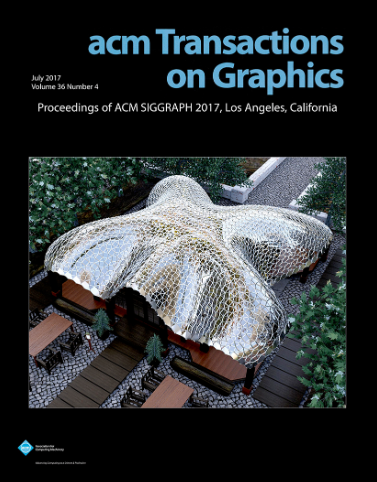射线追踪谐函数
IF 7.8
1区 计算机科学
Q1 COMPUTER SCIENCE, SOFTWARE ENGINEERING
引用次数: 0
摘要
球面追踪是一种快速、高质量的方法,用于将有符号距离函数(SDF)编码的曲面可视化。我们为一类完全不同的由谐函数编码的曲面引入了类似的方法,为可视化计算开辟了丰富的新可能性。我们的出发点在精神上与球面追踪相似:利用对调和函数增长的保守哈纳克约束,我们开发了一种哈纳克追踪算法,用于调和函数水平集的可视化,包括那些角度值和奇点的调和函数。该方法的步长远大于传统的射线行进法,避免了一般寻根方法常见的数值问题,而且与球面追踪法一样,只需在每一步对函数进行点式评估即可。对于许多使用案例,该方法的速度足以在着色器程序中实时运行。我们用它直接从点云(通过泊松曲面重构)或多边形汤(通过广义缠绕数)可视化光滑曲面,而无需线性求解或网格提取。我们还用它来可视化非平面多边形(可能有洞)、建筑几何中的曲面、网格 "外骨骼",以及包括结、链接、球谐波和黎曼曲面在内的关键数学对象。最后,我们证明,至少在理论上,哈纳克跟踪技术为任意隐含曲面的可视化提供了另一种机制。本文章由计算机程序翻译,如有差异,请以英文原文为准。
Ray Tracing Harmonic Functions
Sphere tracing
is a fast and high-quality method for visualizing surfaces encoded by signed distance functions (SDFs). We introduce a similar method for a completely different class of surfaces encoded by
harmonic functions
, opening up rich new possibilities for visual computing. Our starting point is similar in spirit to sphere tracing: using conservative
Harnack bounds
on the growth of harmonic functions, we develop a
Harnack tracing
algorithm for visualizing level sets of harmonic functions, including those that are angle-valued and exhibit singularities. The method takes much larger steps than naïve ray marching, avoids numerical issues common to generic root finding methods and, like sphere tracing, needs only perform pointwise evaluation of the function at each step. For many use cases, the method is fast enough to run real time in a shader program. We use it to visualize smooth surfaces directly from point clouds (via Poisson surface reconstruction) or polygon soup (via generalized winding numbers) without linear solves or mesh extraction. We also use it to visualize nonplanar polygons (possibly with holes), surfaces from architectural geometry, mesh "exoskeletons", and key mathematical objects including knots, links, spherical harmonics, and Riemann surfaces. Finally we show that, at least in theory, Harnack tracing provides an alternative mechanism for visualizing arbitrary implicit surfaces.
求助全文
通过发布文献求助,成功后即可免费获取论文全文。
去求助
来源期刊

ACM Transactions on Graphics
工程技术-计算机:软件工程
CiteScore
14.30
自引率
25.80%
发文量
193
审稿时长
12 months
期刊介绍:
ACM Transactions on Graphics (TOG) is a peer-reviewed scientific journal that aims to disseminate the latest findings of note in the field of computer graphics. It has been published since 1982 by the Association for Computing Machinery. Starting in 2003, all papers accepted for presentation at the annual SIGGRAPH conference are printed in a special summer issue of the journal.
 求助内容:
求助内容: 应助结果提醒方式:
应助结果提醒方式:


